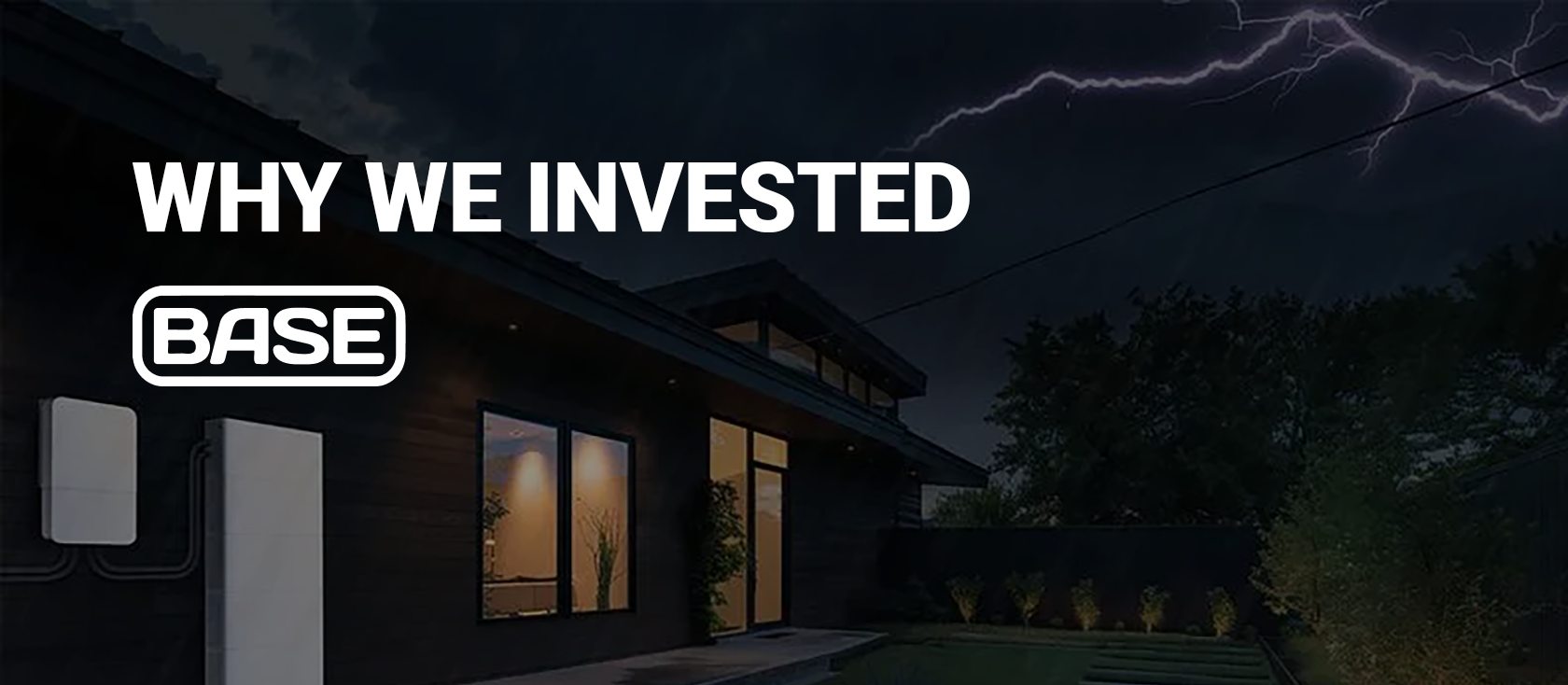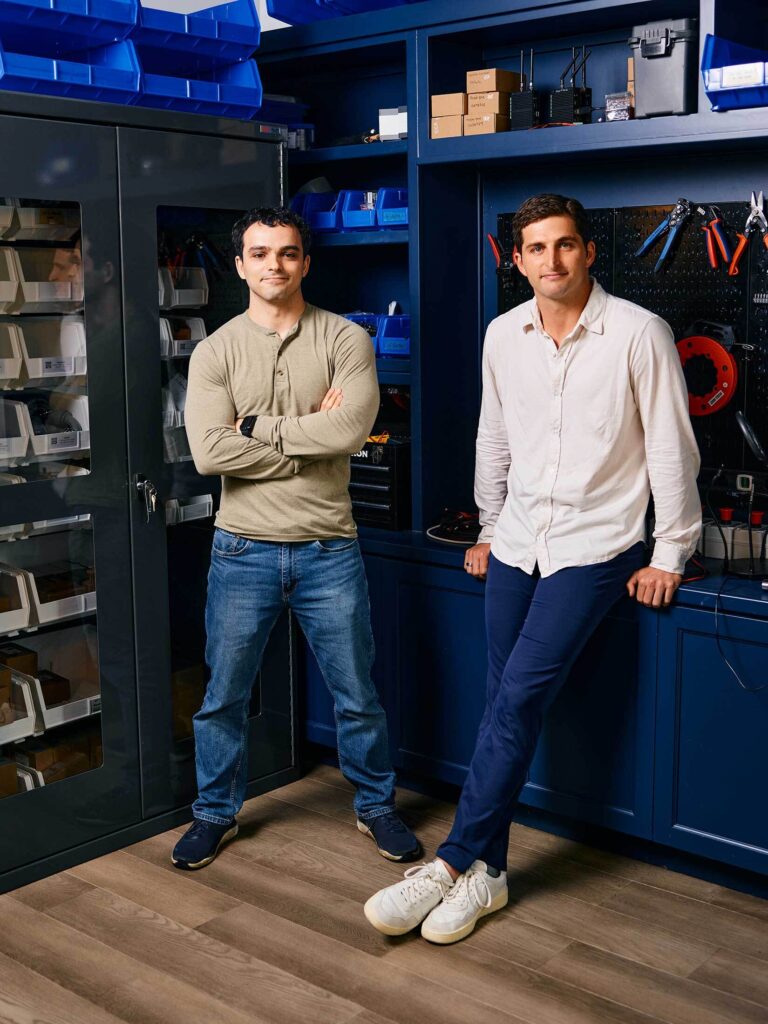
By Ty Findley, Co-Founder & General Partner, and Colleen Konetzke, Principal
Ironspring Ventures is proudly headquartered in Texas, the energy capital of the country for both traditional and renewable energy. The state produced the most wind energy in the country last year, and the second most solar, behind only California. In the fourth quarter of 2023, real GDP for Texas grew at an annual rate of 5.0%, well ahead of the U.S., for the sixth quarter in a row. Yet three years have passed and winter storm Uri is still fresh in many Texans’ minds. During that storm, the Texas grid nearly collapsed during a deep freeze where 2/3 of Texans lost power, half of all Texans lost water, and more than 200 lives were lost. Texas’ economic growth coupled with booming renewable energy growth will only increase electric grid strain. Texas needs to continue being creative in expanding the ways we produce, store, and use electricity in the state – enter Base Power.
Base Power is building the modern power company of the electric era. Our current electrical grid system, both in Texas and in the United States, is designed for power to flow one direction from large, central generation assets over long distances to the end consumer. This is the opposite of the vision for the grid that Base has laid out, and for good reason. The electric grid is heavily regulated and has been chronically under-invested in, so it has not been able to keep pace with the introduction of many intermittent generation assets (like solar and wind). Interconnection to the grid for new utility-scale generation assets is a very long and cumbersome process, taking multiple years. Additionally, electricity demand is set to increase dramatically over the next few years with the electrification of transportation and other traditionally fossil fuel powered processes, not to mention the massive net population increase to Texas specifically. Both demand and supply have become increasingly dynamic, calling for a new approach to how electricity is bought and sold.
Base moves power closer to the consumer and flattens the peaks and valleys of power demand. This theoretically decreases the strain on the grid and also reduces the need for expensive natural gas peaker plants that only turn on to meet peak demand when it is the hottest or coldest. Base Power caters to the Texan spirit of independence – independence from the grid, independence from any single energy source, and independence from traditional business models. It’s fitting that a pioneering business model claims Texas as home.
How does Base Power work? At the highest level, Base will deploy larger, more powerful backup batteries to residential (resi) and commercial & industrial (C&I) customers at a low cost to those customers, providing them backup power, while maintaining control of the batteries and deploying them as a virtual power plant to play into price swings in electricity within each individual day. These batteries will charge while power is cheap and not in high demand, at night or when variable renewable production (e.g., solar) is high, then deploy power to the grid when energy is expensive at peak demand times. Base Power is the first to offer customers a home battery, monthly energy service, and installation all-in-one, with no requirement of solar installation.
The business model innovation is this: Base Power will operate as a REP (retail electricity provider) in order to best control the deployment of these assets and make the highest margin on the power flowing in and out of them. As a REP they will buy electricity from wholesalers and sell it to their customers. Base Power’s primary source of revenue is deploying the batteries at peak times of demand then selling power back to the grid and providing other ancillary grid services. This large network of batteries acts as a dispatchable generation asset, allowing Base to deploy power from these batteries when there is the most demand and strain on the grid, hence when power is the most expensive and most needed.
Texas provides the best unique market conditions for Base Power to get its start. Its grid is largely deregulated (with the exception of a few markets) and is completely separated from the national electrical grid system. A lot of cities and municipalities have regulated their utilities, but there are 8 million customers in Texas who have retail choice. Thanks to extreme cold and heat, as well as increased intermittent generation resources on the grid, Texas has been experiencing more and more price volatility and power outages, driving the need for a solution like Base.

Virtual power plants are not terribly novel and have been around for quite some time, and our team has prior investment experience with one of the earliest venture-backed distributed battery storage innovators, STEM (Nasdaq: STEM). VPPs were being implemented in Europe decades ago, but only really started to pick up steam in the US in 2022 and are increasingly becoming part of the energy mix for major utilities in the US, both in the form of DERS (distributed energy resources) or demand response programs. The first virtual power plants came together in Texas in August of last year. VPPs are a simple concept but can be incredibly challenging to implement. Getting enough participation to meaningfully change demand or production of electricity can be difficult. When it comes to demand response programs that could make up a VPP, residents can just opt out. Ask any Texan to give up control of their thermostat on a 105 degree day, and they’ll look at you like you’re crazy. VPPs can’t inconvenience participants and must compensate them fairly. Finally, VPPs can be operationally hard to implement. They vary significantly by jurisdiction and provider, and there aren’t any recognized standards to streamline their response to indicators that show a need to cut load or provide system stability services. Base Power solves these problems through its innovative business model. By both installing larger batteries and then maintaining control of them through becoming a REP, they address the issues of scale and control.
Even with larger home battery storage, reaching scale will still be critical for Base. Because Ironspring Ventures was formed by boots-on-the-ground operators, we feel strongly that our industrial network can help make Base Power a reality here in our home state. Rolling out hundreds and then thousands of home battery backup systems is no small feat and will require many concrete slabs to be poured, holes to be dug, electricians to help with installation, and many supply chain and manufacturing choices to be made strategically.
Not only did the Ironspring team feel uniquely suited to support this mission, we were also incredibly impressed with the Base Power team. It consists of engineers and operators from SpaceX, Tesla, Anduril, Blackstone, Apple, and other notable companies. We were proud to invest alongside Thrive Capital, Valor Equity Partners, Altimeter Capital, Trust Ventures, Terrain, and other partners.
Sign up to be notified when Base is available in your area here!